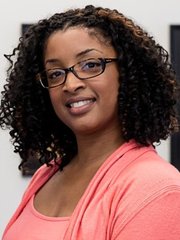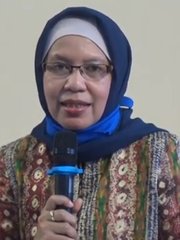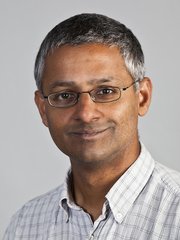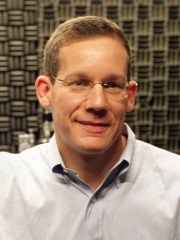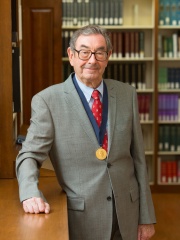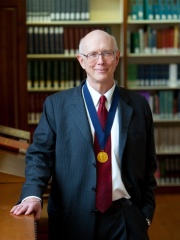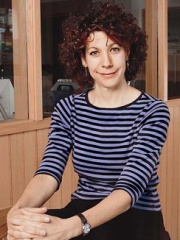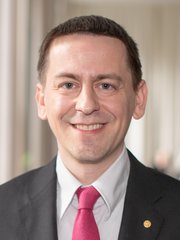CHEMIST
Clarice Phelps
 Clarice Phelps
Clarice Phelps
Clarice Evone Phelps (née Salone) is an American nuclear chemist researching the processing of radioactive transuranic elements at the US Department of Energy's Oak Ridge National Laboratory (ORNL). She was part of ORNL's team that collaborated with the Joint Institute for Nuclear Research to discover tennessine (element 117). The International Union of Pure and Applied Chemistry (IUPAC) recognizes her as the first African American woman to be involved with the discovery of a chemical element. Phelps was formerly in the US Navy Nuclear Power Program. Read more on Wikipedia
Her biography is available in 14 different languages on Wikipedia. Clarice Phelps is the 609th most popular chemist, the 22,002nd most popular biography from United States and the 128th most popular American Chemist.
Clarice Phelps is an American nuclear chemist known for her work in the discovery of the element tennessine, which is a synthetic element on the periodic table. She is also recognized for her contributions to the field of nuclear chemistry and for being one of the few women of color in her field.
Memorability Metrics
Page views of Clarice Phelps by language
Among CHEMISTS
Among chemists, Clarice Phelps ranks 609 out of 602. Before her are Adi Utarini, Shahram Amiri, Mai Thi Nguyen-Kim, John Moolenaar, Shankar Balasubramanian, and Betül Kaçar.
Most Popular Chemists in Wikipedia
Go to all RankingsAdi Utarini
1965 - Present
HPI: 43.33
Rank: 603
Shahram Amiri
1978 - 2016
HPI: 42.36
Rank: 604
Mai Thi Nguyen-Kim
1987 - Present
HPI: 40.71
Rank: 605
John Moolenaar
1961 - Present
HPI: 39.88
Rank: 606
Shankar Balasubramanian
1966 - Present
HPI: 39.03
Rank: 607
Betül Kaçar
HPI: 38.17
Rank: 608
Clarice Phelps
HPI: 28.90
Rank: 609
In United States
Among people born in United States, Clarice Phelps ranks 22,010 out of 20,380. Before her are Alonzo Gee (1987), Justin Deeley (1986), Seth Jones (1994), Alana Beard (1982), Kristie Ahn (1992), and Kendall Marshall (1991). After her are Noortje de Brouwer (1999), Tom Schaar (1999), Rachel Bootsma (1993), Dee Brown (1984), Lance Thomas (1988), and Sadie Maubet Bjornsen (1989).
Others born in United States
Go to all RankingsAlonzo Gee
BASKETBALL PLAYER
1987 - Present
HPI: 28.93
Rank: 22,004
Justin Deeley
ACTOR
1986 - Present
HPI: 28.93
Rank: 22,005
Seth Jones
ATHLETE
1994 - Present
HPI: 28.93
Rank: 22,006
Alana Beard
BASKETBALL PLAYER
1982 - Present
HPI: 28.92
Rank: 22,007
Kristie Ahn
TENNIS PLAYER
1992 - Present
HPI: 28.91
Rank: 22,008
Kendall Marshall
BASKETBALL PLAYER
1991 - Present
HPI: 28.90
Rank: 22,009
Clarice Phelps
CHEMIST
HPI: 28.90
Rank: 22,010
Noortje de Brouwer
ATHLETE
1999 - Present
HPI: 28.90
Rank: 22,011
Tom Schaar
ATHLETE
1999 - Present
HPI: 28.89
Rank: 22,012
Rachel Bootsma
SWIMMER
1993 - Present
HPI: 28.88
Rank: 22,013
Dee Brown
BASKETBALL PLAYER
1984 - Present
HPI: 28.88
Rank: 22,014
Lance Thomas
BASKETBALL PLAYER
1988 - Present
HPI: 28.88
Rank: 22,015
Sadie Maubet Bjornsen
SKIER
1989 - Present
HPI: 28.88
Rank: 22,016
Among CHEMISTS In United States
Among chemists born in United States, Clarice Phelps ranks 128. Before her are Charles M. Lieber (1959), Harry B. Gray (1935), George M. Whitesides (1939), Bonnie Bassler (1962), John M. Jumper (null), and John Moolenaar (1961).
Charles M. Lieber
1959 - Present
HPI: 48.23
Rank: 122
Harry B. Gray
1935 - Present
HPI: 47.81
Rank: 123
George M. Whitesides
1939 - Present
HPI: 47.54
Rank: 124
Bonnie Bassler
1962 - Present
HPI: 46.24
Rank: 125
John M. Jumper
HPI: 45.74
Rank: 126
John Moolenaar
1961 - Present
HPI: 39.88
Rank: 127
Clarice Phelps
HPI: 28.90
Rank: 128
